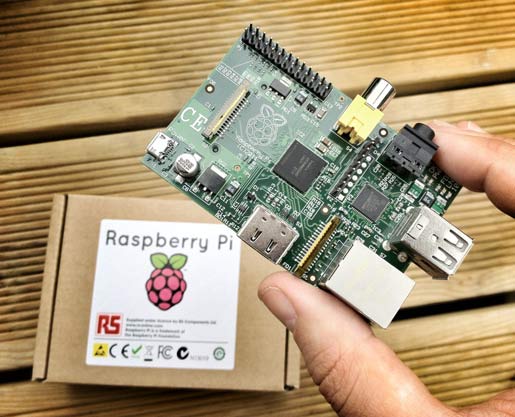Since the late 1970s, there have been many Small Board Computer Systems (SBCs) of one design or another, with none really taking off in popularity because of their intense needs before becoming useful. Not many of us out there can remember the KYM and SYM SBCs made by Commodore and Rockwell (respectively).
But as of lately, there has been a surge in SBC systems in the Educational Market, first starting at the University level and trickling down to the Secondary School level and now onto the general population. These SBCs still need some work to get them running but with the general population now used to setting up their own PCs, such work is now acceptable.
The most popular of these SBCs today is the Raspberry Pi, created in the Great Britain and the UK for its educational market, it is priced to be sold at under $35. But that do you get for $35?

- A credit card sized computer system with a "System on a Chip" (SoC) which contains CPU, 512MB RAM and High End Video and Audio.
- The CPU is an ARM 10 CPU by ARM Semiconductors, a company that has been around since the 1970. The CPU runs at 700MHz and can be overclocked to 1.2GHz with the right precautions taken.
- It has Basic I/O of USB Ports and a 10/100 Ethernet Port. It also has a GPIO Expansion area for connecting various electronics with it. The GPIO is User Programmable.
- The whole system runs on 5 volts at under 2 amps, anything more could damage the board. But the Power Supply is sold separately.
There are various OSes for the Raspberry Pi, most taking the form of some version of Linux, and there are 2 proprietary OS made by ARMs Semiconductors. These have to be installed onto an SD Memory card of 8GB or more. Once installed, the SD Card becomes your system's hard drive".
Not included when you buy a Raspberry Pi are:
- Keyboard and mouse. It is recommended you get a Bluetooth KB and Mouse as the Wireless adapter takes up less power than plugging in an actual USB KB and Mouse.
- 5 volt Power Supply with a mini USB jack to plug in the board.
- An SD Card for the OS, though you buy pre-installed SD Cards from your R-Pi store.
- The OS, which needs to be downloaded from the RaspberryPi.org website. Again, you can buy an SD with the OS already installed.
- Cables to connected to your HDMI Monitor.
This is just the basics in what you need to have a Raspberry Pi. And the Raspberry Pi is not the only SBC out there, but it is the most popular one due to its low price, insertion into the Educational Market and mass availability. Though made in the UK, China has begun cloning the Raspberry Pie for its markets and export. Whether this is allowed by contract by the makers of the Raspberry Pi or not, I do not know.
Banana Pi, BeagleBone, Odroid, Minnow, and many others are SBCs that has recently entered the market with each having their own cpu systems and designs to them while being able to run similar OSes, mostly some form of Linux. Banana Pi is a Chinese version of an update Raspberry Pi with dual core Arm 11 CPU instead of the single core A10 used on the Raspberry Pi, and though it can run the Raspberry Pi OSes, it is designed not to deliberately as to take advantage of the Dual Core CPU capabilities.
Further details will be added on this thread.
 Pages: 1
Pages: 1
 Pages: 1
Pages: 1
 Pages: 1
Pages: 1
 Pages: 1
Pages: 1